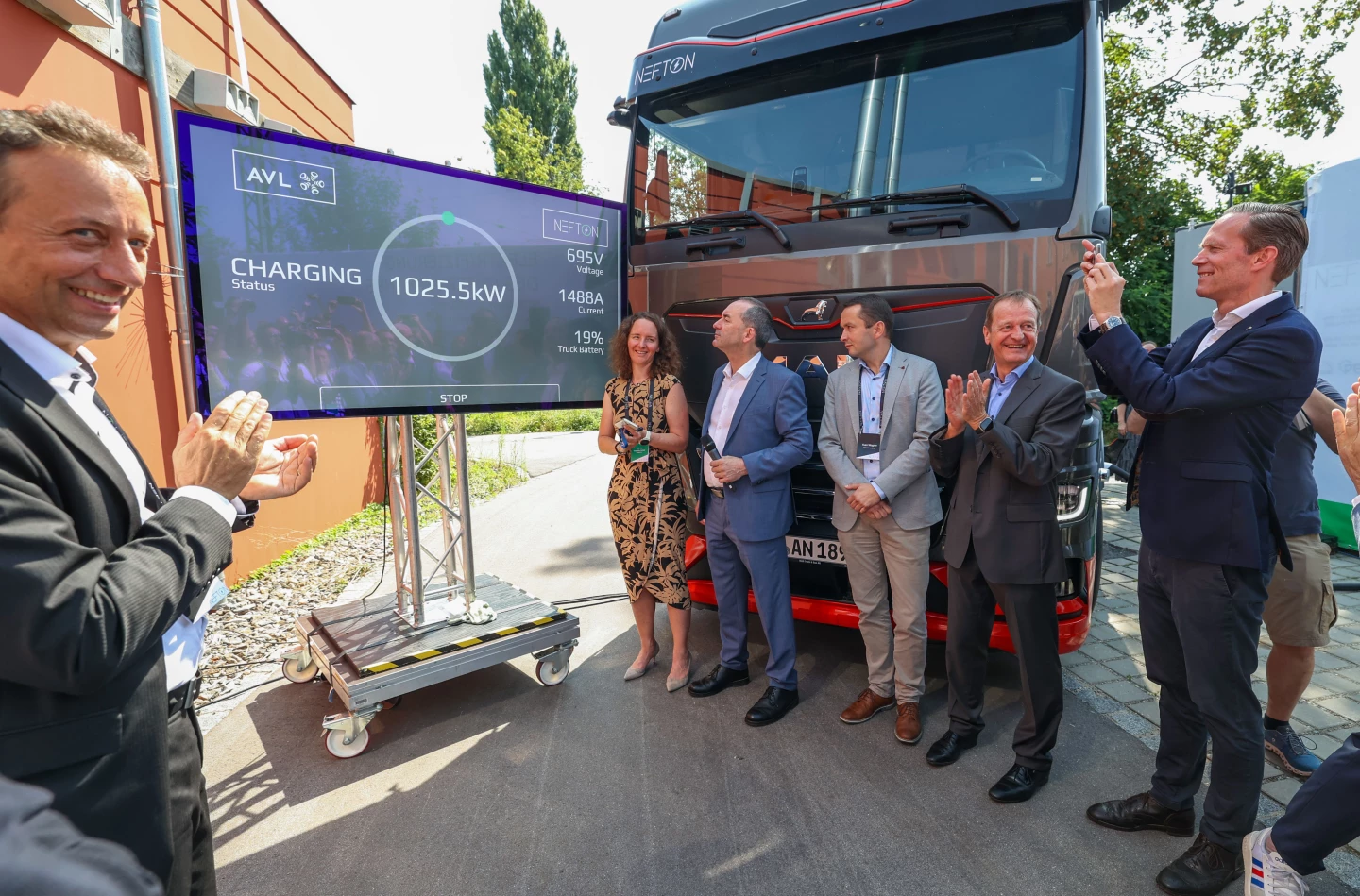MAN Truck & Bus has demonstrated a megawatt charging prototype developed by the Technical University of Munich that pushed out more than 1,000 kilowatts. The 40-tonne eTruck received enough charge in 30 minutes for almost 250 miles of hauling.
Around 70-80% of freight in Germany is reported to be transported by road, with the majority of that hauled by diesel trucks. Switching to battery electric trucking would certainly put a dent in the estimated 148 million tons of CO2 belched out by the industry each year as a result, but operators obviously don't want e-trucks sitting around for long periods charging.
"The scientific facts send a clear message: Battery-powered trucks have an efficiency of around 75%," said Professor Markus Lienkamp at the Technical University of Munich (TUM). "This puts them far ahead of trucks powered by fuel cells with a 26% efficiency and eFuels with a 14% efficiency. However, the necessary infrastructure for the effective use of electric trucks is still lacking along the main transport routes. The technology for megawatt charging represents an enormous step forward."
Back in March, MAN plugged one of its eTrucks into the first prototype of a Megawatt Charging System developed by ABB E-mobility. This has the potential to ramp up to charging capacities of up to 3.75 megawatts at 3,000 amps, but was demonstrated at 700 kW at 1,000 amps at MAN's development center in Munich to prove the technology.
The prototype developed by TUM and partners as part of the NEFTON research project managed to push beyond the megawatt mark to 1,025.5 kW at 1,488 amps to add around 400 km (248.5 miles) of range to the MAN eTruck's battery in half an hour. The TUM press release notes that this rate of charging could provide enough juice "for 4.5 hours of operation within the regulatory rest period."

"With NEFTON, we have succeeded in developing technologies to charge e-trucks within a very short time and with a power output of over 1,000 kW," confirmed MAN's Dr. Frederik Zohm. "Our research focused on practicality, costs and grid connection power. Together with our project partners, we have clearly demonstrated that electric trucks and megawatt charging are the perfect combination for the comprehensive decarbonization of road freight transport. The technology is there, now we need to drive forward the expansion of the charging infrastructure in the market in close cooperation with politicians, the energy industry and vehicle manufacturers."
The research project has determined that a megawatt charging point will need to be installed every 50 km (31 miles) along major routes throughout Europe in order to support the move to long-distance freight hauling by electric trucks. MAN notes that industry estimates show that some 50,000 high-performance and megawatt charging stations will be needed in Europe to help meet 2030 targets set out on the Paris Climate Agreement.
That's an awful lot of infrastructure investment, as well as a huge amount of grid electricity needed to support the drive to electric trucking – with MAN expecting half of its new trucks to be electric by 2030.
The rollout of megawatt charging rollout in Germany will be kickstarted by the government, with Minister of State Hubert Aiwanger stating that megawatt charging is being taken "into account in our current funding program. In the first round, we are financing 86 charging points for road freight transport, and the next funding call is due to start in late autumn [fall]. Together with our hydrogen funding, this program stands for the Bavarian state government's openness to technology in mobility."
Research on bumping up charging technologies to the 3,000-kW mark, along with bidirectional charging to support grid stability, continues. Meanwhile out at sea, the first 8-MW charger powered by renewables has been installed at an offshore windfarm in the North Sea.





